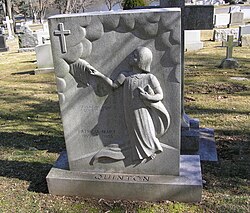
Before modern medicine, child mortality rates were high. Many ancestors experienced the loss of young children. These children were named on fewer records than their siblings who lived to adulthood. This poses a challenge to genealogists who wish to identify every child a couple had.
Hints that there may be missing childrenHints that there may be missing children
The easiest clue comes from the 1900 and 1910 U.S. censuses. These censuses (and the 1890 census) asked mothers how many children they had borne and how many were still living. A discrepancy between those numbers indicates a child died before that census. Comparing those numbers to the number of known children will indicate if additional research is needed to find children.
If the parents were not on these censuses, determining if there are missing children is a matter of guesswork. Pay attention to the age gaps between the known children. It was typical for a couple to give birth a lot of children spaced two to three years apart, so age gaps larger than that could potentially contain a child who was born in between and died young.
Records that name young childrenRecords that name young children
Church and vital recordsChurch and vital records
Burial and death records are the most obvious record type. If the name(s) of the child(ren) is unknown, search databases by the parents' names. If the collection is not indexed, browse through the years the parents were likely having children. If a child died after civil registration in their area, a death certificate may be found for them. In some places, a death or burial register can be found. Once the family's church has been identified, search burial records. It is important not to overlook birth records when searching for young children. For children who died young, the birth and death records would be close together. If the child lived long enough to be baptized (varies by denomination), there would be a baptism record. MyHeritage has many databases for vital records and vital records can be found on on other genealogy websites as well.
Family BibleFamily Bible
Many families kept records of their births, marriages, and deaths in their family bibles, which they would pass down through the generations. Some historical and genealogical societies collect family Bible pages and keep either the digital image or transcriptions thereof. Some family Bible collections are available at the FamilySearch Library. MyHeritage has a collection that includes family Bibles: Search in Family Heirlooms (JustaJoy.com).
Family Bibles would include the names of all children along with their birth dates and death dates.
Cemetery recordsCemetery records
Family members were usually buried near each other in the same cemetery. If a family member's burial place is known, check that cemetery for other family members. MyHeritage has several cemetery databases. Gravestones can also be searched on BillionGraves. Cemetery records can also be found by contacting local historic and genealogical societies. If the cemetery is still in business, additional information can be found by contacting them. In the case of a family migrating, cemeteries in every place they lived would need to be checked. If the cemetery is unknown, check the cemetery for their church and all cemeteries local to the family.
Military pension recordsMilitary pension records
If a widow or dependents of a deceased soldier or veteran applied for a pension, they had to prove the relationship to the deceased. This means the records would contain the names and birthdates of the children alive at the time of the application. Sometimes, a widow, being unable to procure any other proof of marriage, would rip out the family Bible page and send it to the pension office.
Pension records can be found at the National Archives. See the following articles for more information:
Naturalization recordsNaturalization records
Immigrants to the U.S. who wished to become citizens would naturalize. This process had several steps, including filing a petition for naturalization. After 1906, the petition for naturalization listed the name of the wife and names and birthdates of all the children alive at the time of naturalization. Before 1906, the forms for naturalization were not standardized, and the information contained therein was at the discretion of the local courts.
Newspaper announcementsNewspaper announcements
Some families posted announcements in the newspapers of their little ones' passing. Search for the family’s surname in the area the family lived and in the time-frame of when a child may have been born and died. Many newspapers can be found by searching on MyHeritage and OldNews.


